Starkware is a technology company founded in the year of 2018 with a current valuation of over $2 Billion. It has the core mission of developing Zero-Knowledge Technology addressing the scalability and security issues of the Blockchain Trilemma specifically for Ethereum and is developing StarkNet, an L2 solution aiming to solve the problem of scalability for Ethereum and in this blog post we will be understanding how exactly they are solving this problem.
Introduction And Origins
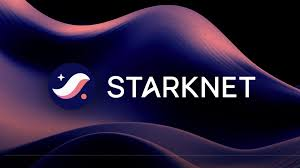
StarkWare is a technology company that specializes in creating scalable and secure blockchain solutions. It was founded in 2016 and the origins of StarkWare are rooted in the desire to address the scalability and security challenges of blockchain technology. StarkWare's innovative approach involves using zero-knowledge proofs and other cryptographic techniques to enable scalable and secure blockchain applications.
StarkWare's technology is designed to significantly increase the scalability of blockchain networks. It achieves this by allowing transactions to be processed off-chain and then verified on-chain using cryptographic proofs. This approach reduces the computational load on the blockchain, enabling it to handle a much higher volume of transactions without compromising on security.
Key Features and Technologies
-
Zero-Knowledge Proofs (ZKPs): StarkWare's technology is built on zero-knowledge proofs, which are cryptographic methods that allow one party to prove to another that they know a value x, without conveying any information apart from the fact that they know the value x. This is crucial for maintaining privacy and security in blockchain transactions.
-
StarkEx: One of StarkWare's flagship products is StarkEx, a decentralized exchange (DEX) that uses StarkWare's technology to enable fast and secure trading of digital assets. StarkEx allows users to trade tokens without revealing their private keys, thus enhancing security.
-
StarkNet: Another significant product is StarkNet, a Layer 2 solution for Ethereum that aims to increase its scalability. StarkNet uses StarkWare's technology to process transactions off-chain and then verify them on-chain, significantly reducing the load on the Ethereum network.
-
StarkWallet: StarkWare also offers StarkWallet, a secure and scalable wallet solution that leverages StarkWare's technology to provide users with a seamless and secure way to manage their digital assets.
Origins and Evolution
StarkWare was founded in 2016 with the goal of solving the scalability and security issues of blockchain technology. The company's founders recognized the potential of zero-knowledge proofs to revolutionize blockchain technology. Over the years, StarkWare has developed and deployed several products and solutions, including StarkEx, StarkNet, and StarkWallet, each contributing to the advancement of blockchain technology.
StarkWare's technology has been recognized for its potential to significantly impact the blockchain industry. The company has attracted significant investment and has been involved in various partnerships and collaborations aimed at furthering its mission of creating scalable and secure blockchain solutions.
To conclude, StarkWare represents a significant advancement in blockchain technology, offering scalable and secure solutions that leverage zero-knowledge proofs and other cryptographic techniques. The company's products, including StarkEx, StarkNet, and StarkWallet, are at the forefront of blockchain innovation, addressing some of the most pressing challenges in the industry. StarkWare's journey from its origins to its current position as a leader in blockchain technology is a testament to the company's commitment to innovation and its impact on the future of blockchain.
Understanding StarkNet

StarkNet is a Layer-2 scaling solution that operates on top of the Ethereum blockchain. Layer-2 solutions are designed to offload transactions and computations from the main blockchain (Layer-1) to a secondary layer, thereby increasing the network's capacity and reducing transaction fees. StarkNet achieves this by using a technology called zk-STARKs (Zero-Knowledge Scalable Transparent Arguments of Knowledge), which allows for the verification of computations without revealing the data used in the computation.
How StarkNet Works
-
State Transition Function: StarkNet uses a state transition function to process transactions. This function is deterministic, meaning it will always produce the same output for the same input. It's crucial for maintaining the integrity of the blockchain.
-
zk-STARKs: To ensure security and scalability, StarkNet uses zk-STARKs. These are cryptographic proofs that allow one party to prove to another that they know a value x, without conveying any information apart from the fact that they know the value x. This is particularly useful for scaling because it allows for the verification of transactions without the need to process them on the main blockchain.
-
Generalized State Transition Function: StarkNet introduces a generalized state transition function that can process multiple transactions at once. This function is designed to be efficient and secure, allowing for the processing of a large number of transactions in a single batch.
-
Batching and Verification: Transactions are batched together and processed by the generalized state transition function. The output of this function is then verified using zk-STARKs. This process allows for the efficient processing of transactions while maintaining the security and integrity of the blockchain.
Benefits of StarkNet
-
Scalability: By processing transactions off the main blockchain, StarkNet significantly increases the number of transactions that can be processed per second. This is particularly beneficial for applications that require high throughput.
-
Security: The use of zk-STARKs ensures that transactions are securely processed without revealing sensitive information. This is crucial for maintaining the privacy and security of transactions on the blockchain.
-
Cost-Effectiveness: By reducing the load on the main blockchain, StarkNet also reduces the cost of transactions. Users can perform transactions at a fraction of the cost compared to the main blockchain.
StarkNet represents a significant advancement in blockchain technology, offering a scalable and secure solution for processing transactions. By leveraging zk-STARKs and a generalized state transition function, StarkNet is poised to revolutionize the way transactions are processed on the Ethereum blockchain, making it more efficient, secure, and cost-effective.
How is StarkNet Solving Scalability?

StarkNet is solving scalability issues in the Ethereum blockchain through a combination of Layer-2 scaling techniques and innovative cryptographic proofs. Here's a detailed look at how StarkNet addresses scalability challenges:
Layer-2 Scaling
StarkNet operates as a Layer-2 solution on top of the Ethereum blockchain. Layer-2 solutions are designed to offload transactions and computations from the main blockchain (Layer-1) to a secondary layer, thereby increasing the network's capacity and reducing transaction fees. This is achieved by processing transactions in batches and verifying them using cryptographic proofs, which significantly reduces the load on the main blockchain.
zk-STARKs
At the heart of StarkNet's scalability solution is the use of zk-STARKs (Zero-Knowledge Scalable Transparent Arguments of Knowledge). zk-STARKs are a type of cryptographic proof that allows one party to prove to another that they know a value x, without revealing any information about x. This is particularly useful for scaling because it allows for the verification of transactions without the need to process them on the main blockchain.
Generalized State Transition Function
StarkNet introduces a generalized state transition function that can process multiple transactions at once. This function is deterministic, meaning it will always produce the same output for the same input. It's crucial for maintaining the integrity of the blockchain. By batching transactions together and processing them with this function, StarkNet can significantly increase the number of transactions that can be processed per second.
Batching and Verification
Transactions are batched together and processed by the generalized state transition function. The output of this function is then verified using zk-STARKs. This process allows for the efficient processing of transactions while maintaining the security and integrity of the blockchain. By verifying the entire batch of transactions with a single proof, StarkNet reduces the computational overhead on the main blockchain, thereby increasing scalability.
In conclusion, StarkNet addresses scalability issues in the Ethereum blockchain by leveraging Layer-2 scaling techniques and innovative cryptographic proofs. By processing transactions in batches and verifying them using zk-STARKs, StarkNet significantly increases the number of transactions that can be processed per second, making the blockchain more scalable and efficient. This approach not only enhances the scalability of the Ethereum blockchain but also reduces transaction fees and increases the overall throughput of the network.
Architecture of StarkNet
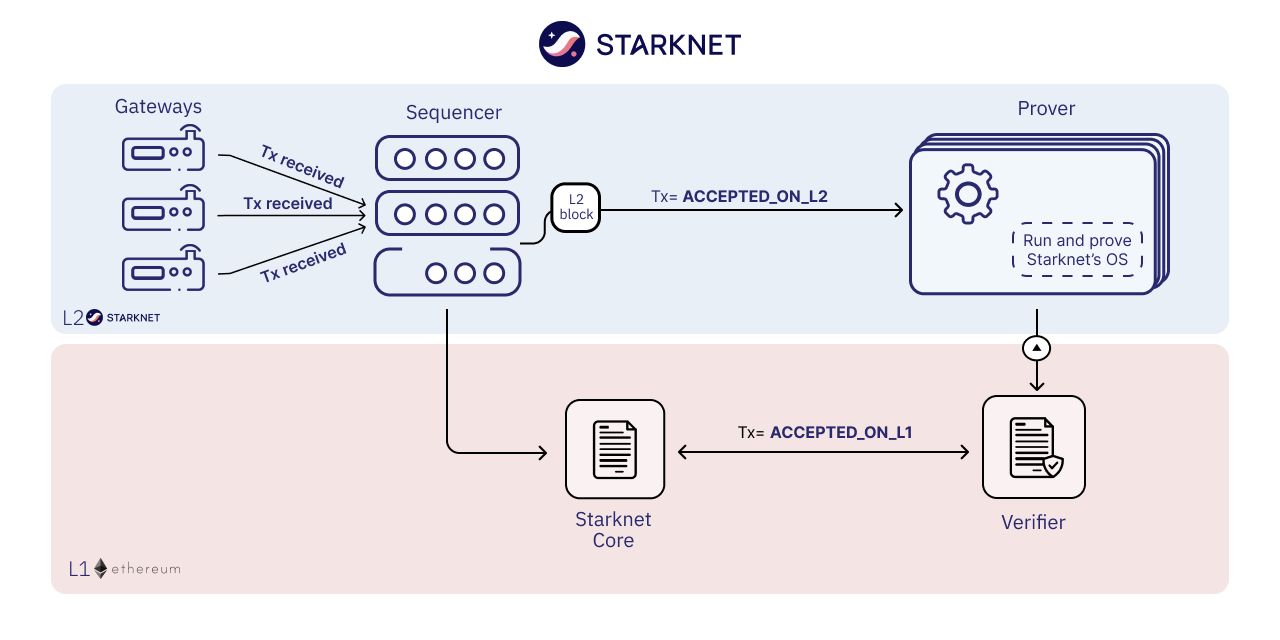
StarkNet’s Architecture involves 3 different main components namely the Sequencer, the Prover, and the L1 Ethereum network’s smart contract for StarkNet capable of verifying the STARK proofs generated [more on this later].
-
Sequencer
The Sequencer is a very critical component of STARKNET’s architecture and it is responsible for the ordering of transactions and generating proofs for them so that they can be verified with the Prover. The sequencer’s role is very important for maintaining the security and integrity of the StarkNet network.
Here are the steps it takes,
-
Transaction Ordering: The Sequencer takes transactions from the StarkNet layer, orders them, and then generates a proof that represents the state transition of these transactions. This ordering is essential for ensuring that all transactions are processed in a deterministic and secure manner.
-
Proof Generation: The Sequencer uses StarkWare's zkSTARKs to generate a proof that represents the state transition of the transactions. This proof is then submitted to the L1 Ethereum network for verification.
-
Security and Trust: The Sequencer's role is crucial for maintaining the security and trust of the StarkNet network. By ordering transactions and generating proofs, the Sequencer ensures that the network operates in a secure and deterministic manner.
2. Prover
The Prover is another key component of StarkNet's architecture. It is responsible for generating and submitting proofs to the L1 Ethereum network. The Prover's role is to ensure that the state transitions represented by the proofs generated by the Sequencer are verified and accepted by the Ethereum network.
-
Proof Submission: The Prover takes the proofs generated by the Sequencer and submits them to the L1 Ethereum network and these proofs represent the state transitions of the transactions processed by the StarkNet network.
-
Verification: The Prover's role is to ensure that the proofs are verified by the L1 Ethereum network. This verification process is crucial for maintaining the security and integrity of the StarkNet network.
-
Security and Trust: By submitting and verifying proofs, the Prover plays a crucial role in ensuring the security and trust of the StarkNet network. It ensures that the state transitions represented by the proofs are accepted by the Ethereum network.
3. L1 Ethereum Network’s Smart Contract for StarkNet
The L1 Ethereum network's smart contract for StarkNet is a critical component that facilitates the interaction between StarkNet and the Ethereum blockchain. This smart contract is responsible for verifying the STARK proofs generated by the Prover.
-
Proof Verification: The smart contract is designed to verify the STARK proofs submitted by the Prover. This verification process is crucial for ensuring that the state transitions represented by the proofs are accepted by the Ethereum network.
-
State Transition: Once a proof is verified, the smart contract updates the state of the Ethereum blockchain to reflect the state transitions represented by the proof. This allows the Ethereum network to maintain a consistent and secure state.
-
Security and Trust: The smart contract plays a crucial role in maintaining the security and trust of the StarkNet network. By verifying proofs and updating the state of the Ethereum blockchain, the smart contract ensures that the network operates in a secure and deterministic manner.
The interaction between these components is crucial for the operation and security of StarkNet. The Sequencer orders transactions and generates proofs, which are then submitted to the Prover. The Prover verifies these proofs and submits them to the L1 Ethereum network's smart contract for StarkNet. This process ensures that all transactions are processed in a secure, deterministic, and efficient manner.
Furthermore, the use of zkSTARKs for generating proofs allows StarkNet to process a large number of transactions while maintaining the security and integrity of the Ethereum blockchain. This architecture leverages the strengths of both the Ethereum blockchain and zkSTARKs to provide a scalable and secure solution for Ethereum.
Deep Dive Into zk-STARKs

zk-STARKs, short for Zero-Knowledge Scalable Transparent Arguments of Knowledge, are a form of zero-knowledge proofs that are particularly well-suited for scalable and transparent applications. They are a key technology used in StarkNet, a Layer 2 scaling solution for Ethereum, to ensure that transactions are verified off-chain while still being secure and verifiable on-chain. Let's delve deeper into the concept of zk-STARKs, their structure, and how they are used in applications like StarkNet.
What are zk-STARKs?
zk-STARKs are a type of zero-knowledge proof that allows one party (the prover) to prove to another party (the verifier) that they know a value x, without conveying any information apart from the fact that they know the value x. This is achieved through the use of a cryptographic proof that can be verified by the verifier without needing to know the value x itself.
How do zk-STARKs work?
zk-STARKs work by using a combination of polynomial commitments and a universal hash function. Here's a simplified overview of the process:
-
Commitment Phase: The prover commits to a set of values (e.g., transactions) using a polynomial commitment scheme. This commitment is a cryptographic hash that represents the set of values.
-
Proof Generation: The prover then generates a proof that demonstrates they know the values committed to, without revealing the values themselves. This proof is generated using a combination of the committed values and a set of auxiliary values (e.g., a secret key).
-
Verification: The verifier can check the proof against the commitment to verify that the prover knows the values committed to, without needing to know the values themselves.
Key Features of zk-STARKs
-
Scalability: zk-STARKs are highly scalable. They can prove the correctness of a computation involving a large number of inputs or outputs without significantly increasing the size of the proof. This makes them ideal for applications like StarkNet, where they are used to aggregate and verify a large number of transactions.
-
Transparency: Unlike some other forms of zero-knowledge proofs, zk-STARKs are transparent. This means that anyone can verify the proof without needing to trust the prover. This transparency is crucial for applications like StarkNet, where it's important to ensure that transactions are verified in a fair and trustless manner.
-
Security: zk-STARKs are secure against a wide range of attacks. They use advanced cryptographic techniques to ensure that the proof cannot be tampered with or forged. This security is crucial for maintaining the integrity and trustworthiness of applications like StarkNet.
Applications of zk-STARKs
zk-STARKs have a wide range of applications, particularly in the realm of blockchain and decentralized applications (dApps). They are used in:
-
Layer 2 Scaling Solutions: Like StarkNet, zk-STARKs are used to scale blockchain networks by allowing for the processing of transactions off-chain and then verifying them on-chain. This reduces the load on the main blockchain and increases throughput.
-
Privacy-Preserving Applications: zk-STARKs can be used to create privacy-preserving applications by allowing users to prove they know certain information without revealing the information itself.
-
Decentralized Finance (DeFi): In DeFi applications, zk-STARKs can be used to verify complex computations (e.g., smart contract executions) without needing to execute them on-chain, thereby reducing gas costs and increasing scalability.
Therefore, zk-STARKs represent a powerful technology for scalable, transparent, and secure zero-knowledge proofs. Their use in applications like StarkNet demonstrates their potential to significantly enhance the scalability and security of blockchain networks. As the technology continues to evolve, we can expect to see zk-STARKs play an increasingly important role in the future of decentralized applications and blockchain technology.
Why Doesn’t Starkware Use ZK-SNARKs?
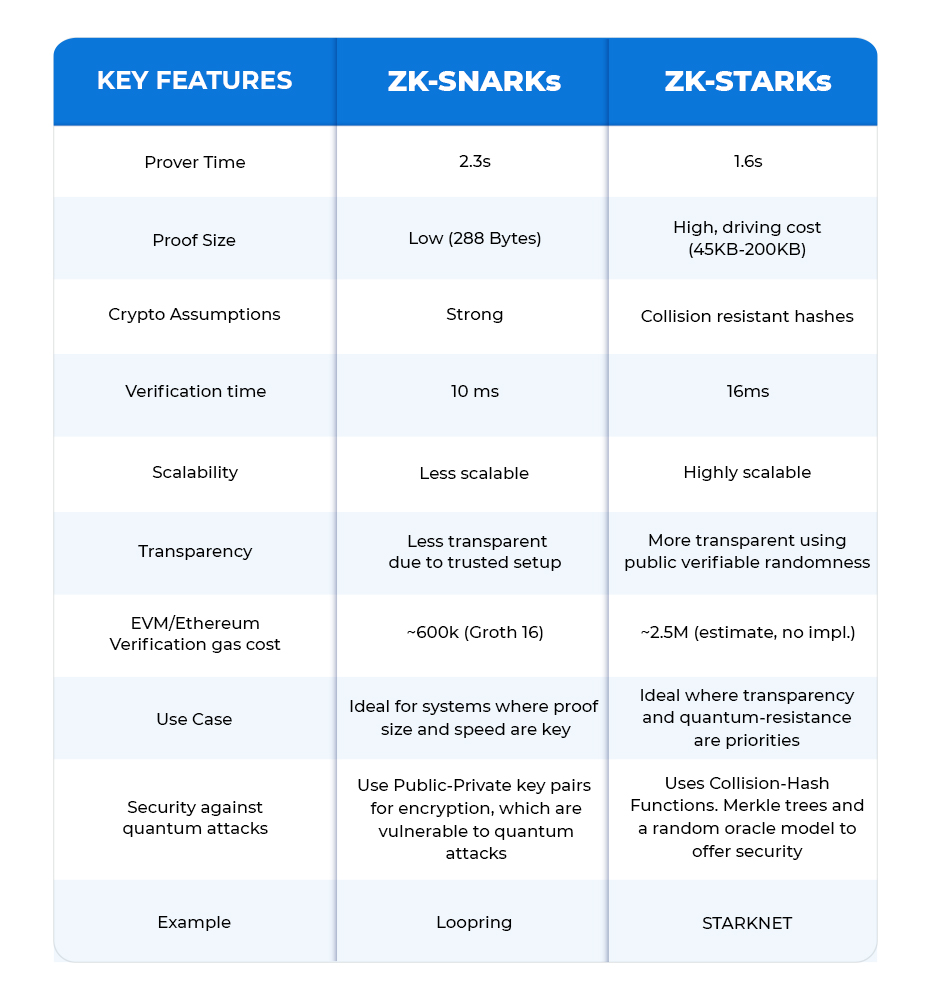
I am very sure some of you guys thought of this question and now let’s understand what it is if you are unfamiliar or need a refresher or not and understand why Starkware doesn’t use it.
zk-SNARKs, short for Zero-Knowledge Succinct Non-Interactive Arguments of Knowledge, are a form of zero-knowledge proof that allows one party (the prover) to prove to another party (the verifier) that they know a value x, without revealing any information about x. This is achieved through a cryptographic proof that can be verified by the verifier without needing to know the value x itself. zk-SNARKs are widely used in blockchain technology for various purposes, including privacy-preserving transactions, scalable blockchain solutions, and more.
The reasons why StarkWare doesn’t use ZK SNARKS for proof validity confirmation is:
-
Scalability and Efficiency: zk-STARKs are designed to be more scalable and efficient than zk-SNARKs. They allow for the aggregation of multiple transactions into a single proof, significantly reducing the amount of data that needs to be stored on-chain. This is particularly beneficial for applications like StarkNet, which aims to process a large number of transactions while maintaining the security and integrity of the Ethereum blockchain.
-
Transparency: zk-STARKs are transparent, meaning that anyone can verify the proof without needing to trust the prover. This transparency is crucial for applications like StarkNet, where it's important to ensure that transactions are verified in a fair and trustless manner. In contrast, zk-SNARKs are not inherently transparent, as they require a trusted setup phase that can introduce potential vulnerabilities.
-
Proof Generation and Verification: zk-STARKs use a different cryptographic mechanism for generating and verifying proofs compared to zk-SNARKs. zk-STARKs use a universal hash function and polynomial commitments, which allows for the generation of proofs that are both scalable and transparent. This mechanism is more efficient and secure for the specific needs of StarkNet and similar applications.
-
Trust Minimization: zk-STARKs are designed to minimize trust in the setup phase, which is a critical aspect of their security model. This minimization of trust is particularly important for applications like StarkNet, where the goal is to maintain the security and integrity of the Ethereum blockchain without compromising on scalability and efficiency.
To conclude, while zk-SNARKs have been widely used in various blockchain applications, StarkWare's choice to use zk-STARKs for StarkNet and other applications is driven by the specific requirements of scalability, transparency, efficiency, and trust minimization. The unique properties of zk-STARKs make them a more suitable choice for the needs of StarkNet and similar Layer 2 scaling solutions.
How Does StarkNet Help Reduce Transaction Fees?
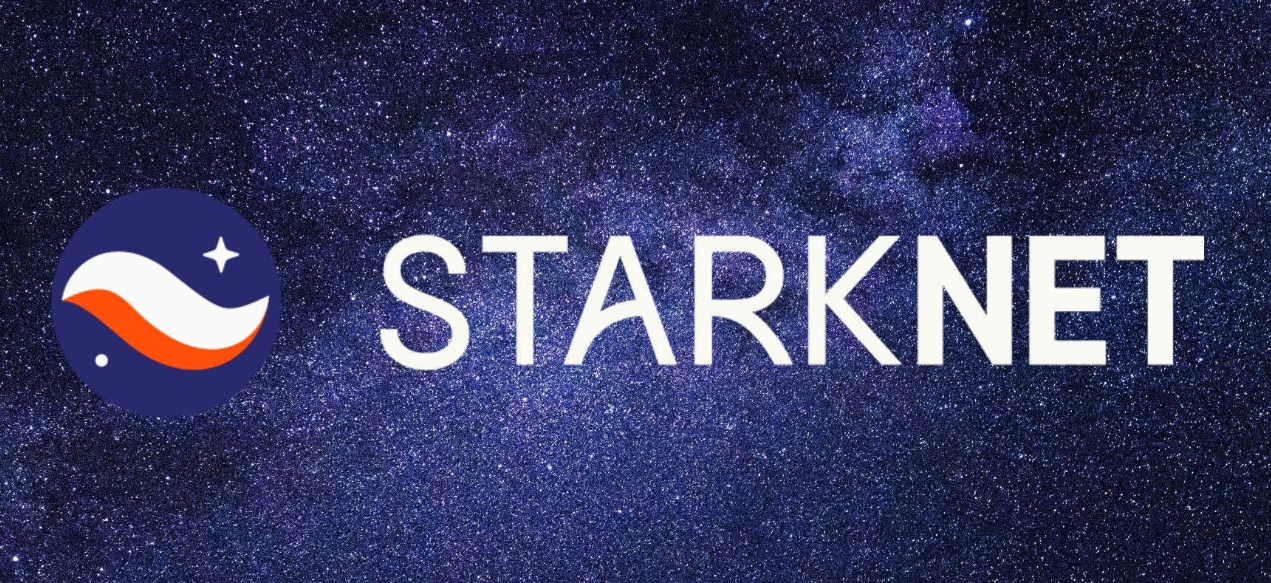
StarkNet's approach to transaction processing significantly reduces gas fees compared to traditional Layer-1 solutions on the Ethereum blockchain. This reduction in costs is a direct result of StarkNet's Layer-2 scaling mechanism and the use of zk-STARKs for transaction verification. Here's how StarkNet achieves cost-efficiency in transactions:
Layer-2 Scaling
StarkNet operates as a Layer-2 solution, which means it processes transactions off the main Ethereum blockchain (Layer-1). By handling transactions in batches and verifying them using zk-STARKs, StarkNet reduces the computational load on the main blockchain. This offloading of transactions to a secondary layer allows for a more efficient use of resources, leading to lower transaction fees.
zk-STARKs for Verification
zk-STARKs are a type of cryptographic proof that allows for the verification of transactions without the need to process them on the main blockchain. This means that transactions can be verified and added to the blockchain cost-effectively, as the verification process does not require the same computational resources as processing transactions directly on the main blockchain.
Generalized State Transition Function
StarkNet uses a generalized state transition function to process multiple transactions at once. This function is deterministic, ensuring that transactions are processed correctly and efficiently. By batching transactions together, StarkNet can significantly reduce the number of transactions that need to be processed individually, further lowering the cost of transactions.
Microtransactions and Frequent Interactions
The reduced gas fees make microtransactions and frequent interactions with decentralized applications (dApps) economically viable. This is particularly beneficial for applications that require high throughput or for users who perform a large number of transactions. By lowering the cost of transactions, StarkNet enables a broader range of applications and use cases on the Ethereum blockchain, making it more accessible and cost-effective for users.
In summary, StarkNet's Layer-2 scaling solution and the use of zk-STARKs for transaction verification significantly reduce gas fees compared to traditional Layer-1 solutions. This cost-efficiency makes microtransactions and frequent interactions with dApps economically viable, enhancing the overall usability and accessibility of the Ethereum blockchain. By leveraging these technologies, StarkNet is paving the way for a more scalable, secure, and cost-effective blockchain ecosystem.
How Does StarkNet Enhance Privacy and Security?

StarkNet enhances both privacy and security in the Ethereum blockchain through the innovative use of zk-STARKs (Zero-Knowledge Scalable Transparent Arguments of Knowledge). zk-STARKs are cryptographic proofs that allow for the verification of transactions without revealing any underlying information. This means that while transactions can be verified and added to the blockchain, the specific details of those transactions remain private. Here's how StarkNet leverages zk-STARKs to enhance privacy and security:
zk-STARKs for Privacy
zk-STARKs are designed to provide privacy by allowing one party to prove to another that they know a value x, without revealing any information about x. This means that while a transaction can be verified as valid, the specific details of the transaction (such as the sender, receiver, and amount) are not disclosed. This is particularly useful for transactions where privacy is a concern, such as financial transactions or any transaction where revealing the details could lead to privacy issues.
zk-STARKs for Security
In addition to enhancing privacy, zk-STARKs also contribute to the security of the blockchain. By allowing transactions to be verified without revealing sensitive information, zk-STARKs help prevent malicious actors from gaining insights into transactions that could be used to exploit vulnerabilities or steal sensitive information. This ensures that transactions remain secure, even as they are processed and verified on the blockchain.
Generalized State Transition Function
StarkNet uses a generalized state transition function to process transactions. This function is deterministic, meaning it will always produce the same output for the same input. It's crucial for maintaining the integrity of the blockchain. By processing transactions in batches and verifying them using zk-STARKs, StarkNet ensures that transactions are securely processed without revealing the data used in the computation.
Thus, By utilizing zk-STARKs, StarkNet ensures that user data remains private and secure. Transactions are verified without revealing any underlying information, protecting the privacy of users and enhancing the overall security of the blockchain. This innovative approach to transaction verification is a significant step forward in blockchain technology, making it more accessible and secure for a wide range of applications and users.
How Does StarkNet Allow Dapps to Publish on Their Own Blockchains?
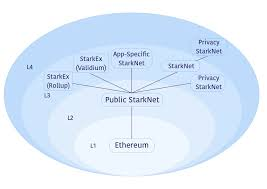
StarkNet allows Dapps and other crypto projects to publish on their own blockchain through the feature of Appchains.
StarkNet's Appchains feature represents a significant advancement in blockchain technology, offering a highly customizable and scalable environment for applications to operate on their own dedicated blockchains. This feature is particularly beneficial for a wide range of applications, including gaming, decentralized finance (DeFi), non-fungible tokens (NFTs), artificial intelligence (AI), and more. Here's how StarkNet Appchains work and their benefits:
What are StarkNet Appchains?
StarkNet Appchains are essentially Layer-2 solutions that allow applications to deploy their own blockchains on top of the StarkNet network. These Appchains are tailored to the specific needs of the application, offering bespoke environments that can be optimized for performance, cost, and privacy.
Benefits of StarkNet Appchains
-
Better Control Over Specs: Applications can customize their Appchains to match their specific requirements, including computational power, storage, and consensus mechanisms. This level of customization allows developers to optimize their applications for performance and efficiency.
-
Lower Cost: By operating on a Layer-2 solution like StarkNet, applications can significantly reduce the cost of transactions and computations. This is particularly beneficial for applications that require frequent transactions or high throughput.
-
Greater Scale: StarkNet Appchains can handle a much larger number of transactions and users compared to traditional Layer-1 solutions. This scalability is crucial for applications that need to support a large user base or process a high volume of transactions.
-
Opt-in Privacy: Applications can choose to implement privacy features on their Appchains, allowing users to opt-in to privacy-enhancing technologies like zk-STARKs. This ensures that users have control over their privacy, with the option to keep their transactions private.
Applications of StarkNet Appchains
-
Gaming: Appchains can offer gaming applications a scalable and cost-effective environment for transactions, such as in-game purchases or token rewards.
-
DeFi: Decentralized finance applications can benefit from the lower transaction costs and greater scalability of StarkNet Appchains, making it easier to offer services like lending, borrowing, and trading with lower fees.
-
NFTs: Non-fungible tokens can be minted and traded on StarkNet Appchains, leveraging the network's scalability and privacy features to support a wide range of use cases.
-
AI: Applications in the AI space can use StarkNet Appchains to process large amounts of data efficiently, without the high costs associated with Layer-1 solutions.
To conclude, StarkNet Appchains represent a powerful tool for developers looking to build applications on the blockchain. By offering bespoke environments that are optimized for performance, cost, and privacy, StarkNet Appchains enable a wide range of applications to thrive on the blockchain. Whether it's gaming, DeFi, NFTs, AI, or more, StarkNet Appchains provide a scalable and cost-effective solution for building and deploying applications on the blockchain.
StarkNet Stack
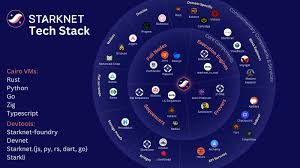
StarkWare’s StarkNet Stack is experiencing a rapid amount of growth and adoption and is expected to lead the Appchain space due to its performance, security and, expressiveness.
It rapidly growing technology stack that is expected to lead the Appchain space due to its superior performance, security, and expressiveness. It is built on STARKs (Scalable Transparent Argument of Knowledge), which are considered the safest and most scalable technology for blockchain applications. The stack is designed to provide scalability and Ethereum-level security by producing STARK proofs off-chain and then sending them on-chain.
The Starknet Stack includes Contracts, the Starknet Operating System, and Cairo, a programming language for STARK-proving general computation. The stack also includes the STARK Prover and the Cairo Verifier, which have settled over 400M transactions and over $1T worth of trades on Ethereum Mainnet.
Cairo StarkNet Stack
Cairo is a Turing-complete language designed for succinctly proving the correct execution of Cairo programs. It is a stateless language, meaning that it does not have native access to storage, other Cairo programs, or the L1 state. However, it can access those through the Starknet Virtual Machine (VM), which has a persistent state that smart contracts can access and modify. These smart contracts can store variables, communicate with other contracts, and send/receive messages to/from L1.
StarkNet OS
Starknet OS is a Cairo-based operating system that is responsible for proving and verifying the state transitions of the Starknet network. It is the core program that runs on the Starknet Sequencer Node, which implements the core functionality of sequencing transactions submitted to it. The Starknet OS Cairo program executes with the relevant inputs, proves the result using the Proving Service or some internal STARK prover, and eventually updates the network state on the Starknet Core Contract. The OS is essentially the program whose output is proven and verified using the STARK-proof system, and it facilitates the execution of Starknet contracts by updating the L2 state of the system based on transactions that are received as inputs. Specific system operations and functionality available for Starknet contracts are available as calls are made to the OS. The Starknet OS is a critical component of the Starknet network, ensuring the security and integrity of the system by utilizing the L1 Ethereum consensus mechanism.
StarkNet Contracts
Starknet contracts are written in Cairo, a specialized programming language designed for proving the correct execution of programs using the STARK cryptographic proof system. These contracts live in the Starknet Virtual Machine (VM), which has a persistent state that smart contracts can access and modify. Starknet contracts can store variables, communicate with other contracts, and send/receive messages to/from L1. Cairo allows for general computation, enabling any business logic to be implemented and processed over StarkNet. Developers have the option to write contracts in Cairo, the native language for Starknet contracts, or use transpilers from other languages like Solidity to Cairo for quick deployment on Starknet. The decentralization of the Starknet network allows anyone to operate on the network, including Sequencers, Provers, Developers, and Users, ensuring censorship resistance and correct state verification through STARK-proofs.
StarkNet Appchains
As covered earlier, Starknet Appchains are also instances of Starknet that power a specific application or a host of applications, allowing for the configuration of the network's block size, latency, data availability mode, fees, consensus mechanism, and more. The Starknet Foundation is introducing Provisions for members of various groups who have helped advance Starknet, and the Starknet Book and the Starknet Discord server provide resources for developers interested in Starknet development.
Decentralization and Innovation in StarkNet
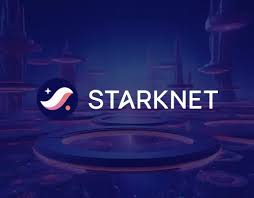
StarkNet's approach to decentralization is a cornerstone of its design philosophy, aiming to enhance network security, resilience, transparency, scalability, and innovation. By focusing on decentralization, StarkNet is positioning itself as a leading Layer-2 (L2) stack that not only addresses the scalability challenges of the Ethereum blockchain but also fosters a more secure, resilient, and transparent network. Here's how StarkNet's decentralization strategy contributes to these goals:
Enhanced Network Security
Decentralization inherently increases the security of the network. By distributing the network's operations across multiple nodes, no single point of failure exists. This means that even if a portion of the network is compromised, the overall security of the system remains intact. Additionally, the use of zk-STARKs for transaction verification further enhances security by ensuring that transactions are verified without revealing sensitive information.
Increased Resilience
A decentralized network is more resilient to attacks and failures. If one node goes down, the network can continue to operate without interruption. This resilience is crucial for maintaining the availability and reliability of applications built on the blockchain. StarkNet's decentralized architecture ensures that the network can withstand various forms of attacks and continues to operate efficiently.
Greater Transparency
Decentralization also promotes transparency. With multiple nodes verifying transactions and maintaining the state of the network, it's more difficult for any single entity to manipulate the system. This transparency is essential for building trust among users and developers, ensuring that the network operates in a fair and open manner.
Scalability and Innovation
StarkNet's decentralized Layer-2 stack is designed to significantly enhance the scalability of the Ethereum blockchain. By processing transactions off the main blockchain and verifying them using zk-STARKs, StarkNet can handle a much larger number of transactions per second. This scalability is crucial for supporting a wide range of applications, from gaming to DeFi, that require high throughput.
Moreover, the decentralized nature of StarkNet encourages innovation. Developers can experiment with new features and improvements without being constrained by the limitations of the main blockchain. This environment fosters a culture of innovation, leading to the development of new applications and services that leverage the full potential of blockchain technology.
Conclusion
StarkNet's focus on decentralization is a strategic choice that aims to create a more secure, resilient, transparent, scalable, and innovative network. By leveraging decentralization, StarkNet is positioning itself as a leading Layer-2 solution that not only addresses the scalability challenges of the Ethereum blockchain but also fosters a network that is secure, resilient, and conducive to innovation. This approach is set to redefine the landscape of blockchain technology, making it more accessible and efficient for a wide range of applications.
Future of StarkNet

Now, let’s understand what’s next for this project.
Enhanced Scalability
StarkNet, as a Layer-2 solution, plays a crucial role in enhancing the scalability of the Ethereum blockchain. By processing transactions off the main blockchain and verifying them using zk-STARKs, StarkNet can significantly increase the number of transactions that can be processed per second. This scalability is essential for supporting the growing ecosystem of decentralized applications (dApps) and services.
Redefining Blockchain Scalability and Security
StarkNet's approach to scalability and security is set to redefine the blockchain landscape. By leveraging zk-STARKs for transaction verification and a decentralized architecture, StarkNet offers a solution that is both scalable and secure. This combination of features makes StarkNet a cornerstone in the decentralized future of finance and beyond. The ability to process transactions efficiently without compromising on security is a game-changer, enabling the development of more complex and secure applications on the blockchain.
Decentralized Future of Finance
The decentralized future of finance is expected to be characterized by increased adoption of blockchain technology across various sectors, including finance, gaming, and more. StarkNet's potential to enhance the scalability and security of the Ethereum blockchain is particularly beneficial for this future. By providing a scalable and secure Layer-2 solution, StarkNet can support the development and operation of decentralized finance (DeFi) applications, non-fungible tokens (NFTs), and other blockchain-based services. This support is crucial for the growth and adoption of decentralized finance, as it addresses the scalability and security challenges that currently limit its potential.
Conclusion
The future of StarkNet and StarkWare's Layer-2 solution is poised to play a crucial role in enhancing the network's throughput and supporting the development of a wide range of decentralized applications. With its potential to redefine blockchain scalability and security, StarkNet is positioned as a cornerstone in the decentralized future of finance and beyond. As the Ethereum blockchain continues to evolve, StarkNet's contributions to scalability, security, and decentralization will undoubtedly shape the future of blockchain technology.
StarkNet Foundation
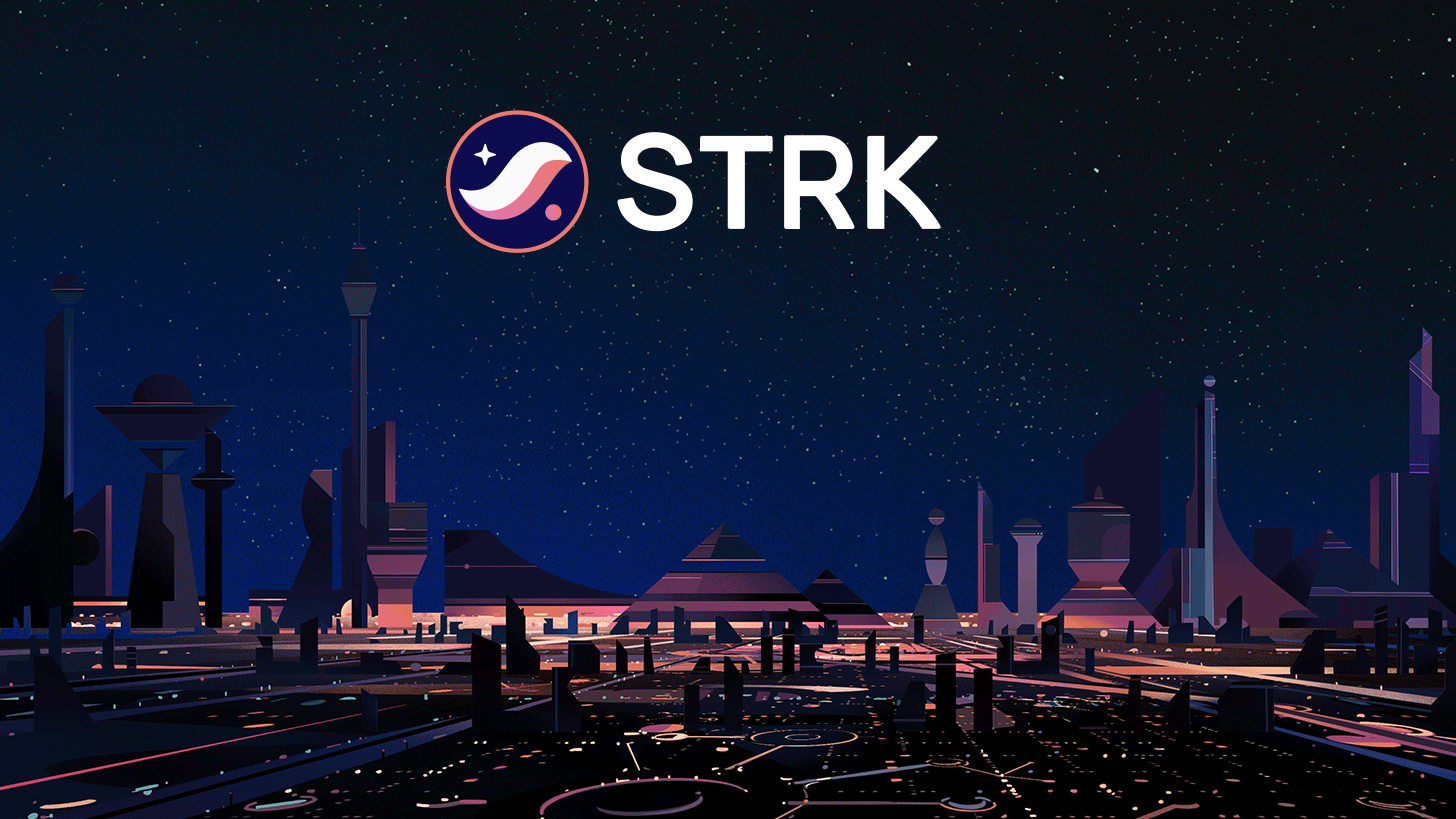
The StarkNet Foundation is a key component of the StarkNet ecosystem, focusing on the development, governance, and promotion of StarkNet as a Layer-2 solution for the Ethereum blockchain. The foundation plays a crucial role in ensuring the long-term success and adoption of StarkNet, by fostering a community-driven approach to innovation and scalability. Here's a closer look at the StarkNet Foundation, including its provisions program and its broader objectives:
StarkNet Provisions Program
The StarkNet Provisions Program is a significant initiative by the StarkNet Foundation aimed at supporting the development and adoption of StarkNet. This program provides financial incentives to developers and projects that contribute to the StarkNet ecosystem. By offering provisions, the foundation encourages the creation of new applications, tools, and services on StarkNet, thereby enhancing its utility and scalability.
The provisions are distributed based on the impact and utility of the contributions made to the StarkNet ecosystem. This could include the development of new dApps, the creation of tools and libraries for developers, or the implementation of innovative solutions that leverage StarkNet's unique features.
Objectives of the StarkNet Foundation
-
Promote Innovation: The foundation aims to foster a culture of innovation within the StarkNet ecosystem. By providing financial incentives, the foundation encourages developers to explore new ideas and technologies that can enhance the capabilities of StarkNet.
-
Governance and Decision-Making: The StarkNet Foundation plays a crucial role in governance, ensuring that decisions related to the development and operation of StarkNet are made in the best interest of the ecosystem. This includes setting the technical direction, managing the provisions program, and addressing any challenges or issues that arise.
-
Community Building: The foundation is committed to building a strong and active community around StarkNet. By engaging with developers, users, and other stakeholders, the foundation aims to create a vibrant and supportive ecosystem that drives the adoption and growth of StarkNet.
-
Educational Initiatives: The foundation also focuses on educational initiatives to raise awareness about StarkNet and its potential. This includes organizing workshops, webinars, and other educational events to help developers and users understand how to leverage StarkNet for their projects.
To conclude, The StarkNet Foundation is a vital part of the StarkNet ecosystem, dedicated to promoting innovation, governance, and community building. Through its provisions program, the foundation supports the development and adoption of StarkNet, ensuring that the platform remains at the forefront of blockchain scalability and security. As StarkNet continues to evolve, the foundation's role in fostering a thriving and innovative ecosystem will be crucial in realizing the full potential of StarkNet as a Layer-2 solution for the Ethereum blockchain.
Starknet Tokenomics, Community and Governance
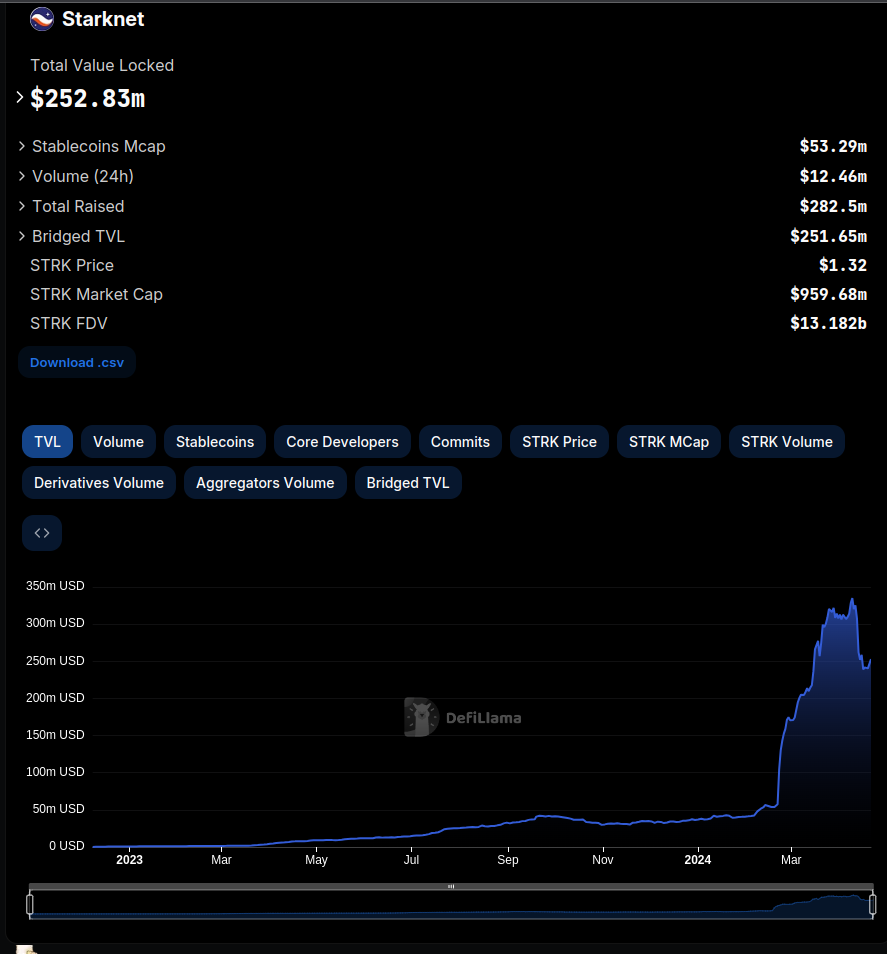
Tokenomics of StarkWare's STKE Token
-
Purpose: The STKE token is used for governance within the StarkWare ecosystem. It allows STKE token holders to participate in the decision-making process regarding the development and future direction of StarkNet and other StarkWare projects.
-
Distribution: STKE tokens are distributed through various means, including staking, liquidity provision, and participation in the StarkWare ecosystem. The exact distribution mechanisms and rates can change over time based on the project's needs and community feedback.
-
Governance: STKE token holders can propose and vote on governance proposals. The weight of a vote is proportional to the number of STKE tokens held by the voter. This mechanism ensures that those who are most invested in the ecosystem have a say in its future.
-
Incentives: STKE tokens can also be used as incentives for developers, validators, and other participants in the StarkWare ecosystem to contribute to its growth and development.
Community and Governance
-
Community Engagement: StarkWare actively engages with the Ethereum and broader blockchain community through various channels, including forums, social media, and developer events. This engagement helps to foster a strong and supportive community around StarkNet and other StarkWare projects.
-
Open Source: StarkNet and related projects are open source, allowing anyone to contribute to their development. This openness encourages collaboration and innovation within the community.
-
Developer Support: StarkWare provides extensive documentation, tutorials, and support for developers working on StarkNet and other projects. This support helps to ensure that the ecosystem is accessible and welcoming to new participants.
Governance within the Ethereum Ecosystem
-
EIPs and Proposals: StarkNet's development and integration into the Ethereum ecosystem are guided by Ethereum Improvement Proposals (EIPs) and governance proposals. These proposals are discussed and voted on by the Ethereum community, ensuring that StarkNet aligns with the broader Ethereum vision and goals.
-
Stakeholders: The governance of StarkNet involves various stakeholders, including developers, validators, and users of the StarkNet network. These stakeholders have a say in the development and future direction of StarkNet through the Ethereum governance process.
In conclusion, StarkNet, while operating within the Ethereum ecosystem, has its own unique governance and tokenomics through the use of the STKE token for governance and incentives within the StarkWare ecosystem. The project's success depends on active community engagement, open-source development, and a governance process that involves a wide range of stakeholders. As StarkNet continues to evolve, it's likely that its governance and tokenomics will adapt to meet the needs of its growing community and the broader Ethereum ecosystem.
Conclusion
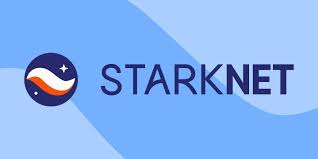
In conclusion, StarkNet represents a pivotal step forward in the evolution of blockchain technology, offering a scalable, secure, and decentralized Layer-2 solution that addresses the limitations of the Ethereum blockchain. By leveraging zk-STARKs and a decentralized architecture, StarkNet is poised to redefine the landscape of blockchain scalability and security, positioning itself as a cornerstone in the decentralized future of finance and beyond.
The StarkNet Foundation's commitment to fostering innovation, governance, and community building further underscores the platform's potential to drive the adoption and growth of decentralized applications. Through its provisions program, the foundation not only supports the development of new applications and tools but also encourages a culture of collaboration and innovation within the StarkNet ecosystem.
As the Ethereum blockchain continues to be adopted and the demand for scalable and secure blockchain solutions continues to grow, StarkNet stands out as a leading Layer-2 solution. Its ability to enhance the scalability and security of the Ethereum blockchain, coupled with its focus on decentralization, makes it an essential component of the decentralized future.
The future of StarkNet is bright, with significant potential for growth, innovation, and impact on the blockchain ecosystem. By continuing to innovate, expand its ecosystem, and navigate the complexities of regulatory compliance and adoption, StarkNet is well-positioned to play a crucial role in shaping the future of blockchain technology. As the world moves towards a more decentralized and interconnected future, StarkNet's contributions to scalability, security, and decentralization will undoubtedly be at the forefront of this transformation.




评论 (0)